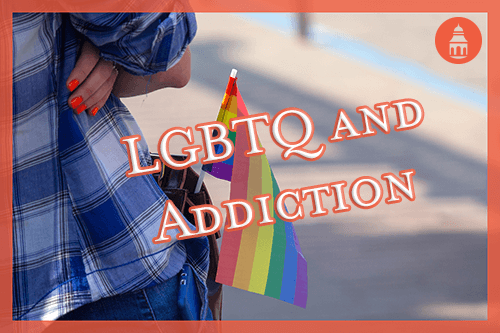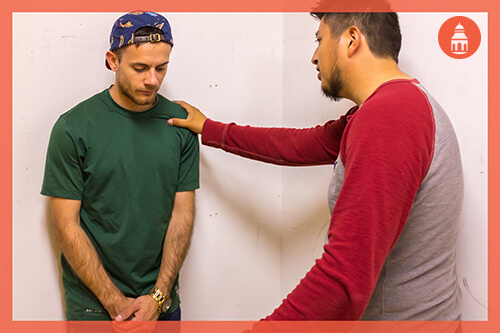The lesbian, gay, bisexual, transsexual, and queer (LGBTQ) population experiences addiction along with other issues that are related to their sexual orientation or lifestyle. LGBTQ individuals who are in recovery often deal with different issues than the general public. For this reason, many facilities now offer programs specifically geared toward this population. This ensures these individuals receive treatment that is specific to their needs in order to promote a healthy and safe recovery.
Issues Specific to the LGBTQ Community
Per the Williams Institute, a division of the UCLA School of Law, 19 million Americans report that they engage in same-sex sexual behavior while 25.6 million Americans state they experience same-sex sexual attraction. However, only 1.8 percent of Americans identify as lesbian, gay, or bisexual. Additionally, in America, there are nearly 700,000 transgendered individuals. Because not everyone accepts these individuals for who they are, they are faced with unique circumstances that may lead to unhealthy behaviors and depression.
LGBTQ people have a high rate of suicide. In particular, LGBTQ youth have a high rate of suicide, with suicide being the second leading cause of death in LGBTQ individuals between the ages of 15 and 24. One study indicated that LGBTQ adolescents in grades 7-12 were over twice as likely to attempt suicide than their heterosexual peers. Another study conducted on 55 transgendered students indicated that 25 percent of that group made a suicide attempt.

A study conducted in 2013 revealed that 7.2 percent of US college students identify as lesbian, gay, or bisexual. These individuals report greater feelings of loneliness than heterosexual students. They are more likely to receive a diagnosis of depression. Not to mention, many state that they have less reason to live.
The reasons for a high rate of suicide in the LGBTQ community include:
- Bullying
- Teasing
- Harassment
- Violence
- Feeling abnormal
- Feeling ostracized
- Discrimination
Even at a young age, members of the LGBT community may feel depressed and engage in negative behaviors. For instance, per the 2009 National School Climate Survey, 61.1 percent of middle school and high school LGBT youth were likely to feel unsafe or uncomfortable due to their sexual orientation, especially in comparison to individuals who were not LGBT. This discomfort often leads to unexcused absences from school and avoidance of social situations, causing additional issues that lead to stress and depression.
Data retrieved from the Youth Risk Behaviors Surveys revealed that 12-18 percent of lesbian, gay, or bisexual students were threatened or injured with a weapon on school premises. Additionally, 19-29 percent of lesbian and gay students experienced dating violence in the previous year, and 18-28 percent of bisexual students such violence in the previous year.
About 14-31 percent of gay and lesbian students reported that they were forced to have sexual intercourse against their will at some point in their lives, and 17-32 percent of bisexual students were forced to have sexual intercourse at some point in their lives. Of course, experiences of violence and rape greatly affect victims, leading many to substance abuse.
We Offers Group Meetings for Gay Men Struggling with Substance Abuse
Substance Abuse and the LGBTQ Community
For all the above-mentioned reason, this group of individuals is more likely to abuse substances, including alcohol, prescription drugs, and illicit drugs. According to the Center for American Progress, it is estimated that 20-30 percent of gay and transgendered people abuse substances in comparison to 9 percent of the general population.
The LGBT population is discriminated against on a local level and in relation to laws that govern them. Places of employment may discriminate and so may housing authorities. Overall, it makes it harder for these individuals to find employment and housing, leading to financial issues and concerns. Not to mention, it leads to a high rate of homelessness among this population.
It does not help that some question their sexual orientation or deny it in order to fit in with the general population. They may worry about coming out and what it could mean to their relationships with family and friends. This often leads to depression and anxiety.
In fact, gay, lesbian, bisexual, and transgendered individuals are nearly three times as likely to experience a mental health condition – in particular, major depressive disorder or generalized anxiety disorder. These mental health issues may lead to self-medicating with drugs and alcohol for relief. This is especially true for those who are afraid to tell others about their sexual orientation.
The National Council on Alcoholism and Drug Dependence states that almost 18 million Americans abuse alcohol regularly. This abuse takes a toll on their relationships, causes financial difficulties, and leads to numerous medical and mental health issues. The problems are even greater for LGBT individuals. In fact, it is estimated that up to 45 percent of these individuals abuse alcohol at some point in their lives.
Gay men appear to have a much higher rate of drug abuse than the general population.
Gay males are more than 3.5 times as likely to abuse marijuana than heterosexual males. The rate of amphetamine abuse is much higher in gay males, with gay men being 12.2 times more likely to use amphetamines than heterosexual males. Gay males are about 9.5 times more likely to use heroin than heterosexual males. The gay population is also more likely to abuse “poppers,” more commonly known as nitrous oxide.
The socialization aspect of bars and nightclubs are attractive to this population, especially considering the increased number of social locations designed specifically for the LGBT population. When they are ostracized by others, LGBTQ individuals oftentimes turn to safe locations where they may socialize with people who have the same experiences as they do. Bars and nightclubs are also popular for meeting potential romantic partners, and alcohol flows freely at these locales.
Substance Abuse Treatment Options for the LGBTQ Community

Many substance abuse treatment options cater to the particular needs of this group and the specific issues that weigh heavy on the LGBTQ population. For instance, individuals who identify as gay, lesbian, bisexual, transgendered, or queer may have trust issues with the heterosexual community based on past experiences. It is possible that they may delay treatment for substance abuse because of this mistrust or fear. They may worry that treatment providers will not understand their struggles or may reject them as a result of their sexual orientation.
LGBTQ treatment programs can give clients a sense of calm that they will be accepted for who they are in treatment. LGBTQ programs are designed to accommodate specific issues related to this community, and clients can rest assured that their peers in treatment will understand where they’re coming from.
One of the first steps to recovery is identifying the issues that led to the drug or alcohol abuse and what emotions played a role. It is also crucial to identify mental health issues that may be co-occurring alongside the substance abuse issues. Treating all co-occurring disorders simultaneously improves treatment results. If only one disorder is treated, relapse is likely.
As with standard addiction treatment, individuals in dedicated LGBTQ programs generally engage in detox after intake. During detox, all substances are processed from the client’s body, allowing them to enter therapy with a clear mind and body. The facility provides support throughout this process.
A medical professional may prescribe medications to cope with the symptoms of withdrawal, such as medications for depression and anxiety. The client may be given antidiarrheal or anti-nausea medication as well.
In some cases, clients may be placed on maintenance medications, such as methadone or Suboxone, which are used to treat opiate addiction. These medications act on the same receptors in the brain as opiates to prevent some of the symptoms of withdrawal. Generally, doses of these replacement medications are slowly lowered over the course of months until the person is wholly detoxed.
Professional who work in programs specifically designed for the LGBTQ community understand the specific issues these individuals face. They understand the discrimination and other problems that plague this community, often leading to substance abuse. These programs specifically address these issues; they may help the person to find employment, accept their sexual orientation, and deal with any other issues that may contribute to the substance abuse. For this reason, the therapy aspect of treatment for LGBTQ individuals is vital.
Therapy, in particular Cognitive Behavioral Therapy, helps the person cope with negative feelings that may be associated with sexual orientation. Ultimately, therapy assists the person in converting these negative feelings into more positive thoughts. It is essential for the person to address the underlying emotional issues associated with sexual orientation. This internal acceptance leads to embracing a healthier standing in life that doesn’t involve alcohol or drugs.
Treatment programs for LGBTQ individuals also have support groups comprised of other LGBTQ individuals who are undergoing substance abuse issues. Peer support is critical in recovery, and it can be difficult to feel understood if peers don’t understand the specific issues a person faces. As a result, those in LGBTQ programs are more likely to experience real understanding and empathy from peers who are also dealing with issues related to sexual orientation.
LGBTQ-specific programs are more likely to offer this population a comprehensive and inclusive treatment experience that caters to their needs. These programs are increasing in availability throughout the country, helping LGBTQ individuals to achieve long-term recovery.
We Have a Men-Only Sober Living Home
